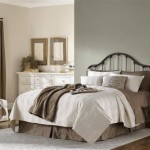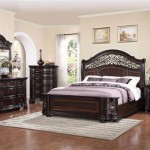Ceiling Fan Chandeliers for Bedrooms: Illuminating Style and Comfort
Ceiling fan chandeliers represent a hybrid lighting fixture, seamlessly merging the functionality of a ceiling fan with the aesthetic appeal of a chandelier. These fixtures serve a dual purpose: circulating air to enhance comfort and providing illumination to enhance the ambiance of a room. Their increasing popularity stems from their space-saving design, offering two essential functions within a single unit, particularly advantageous in bedrooms where both adequate lighting and air circulation are desirable.
The design and construction of ceiling fan chandeliers involve a careful balance of engineering and aesthetics. The fan component generally comprises a motor, blades, and housing, similar to traditional ceiling fans. The chandelier portion incorporates a variety of materials, including crystals, glass, metal, and fabric, arranged in decorative patterns. The integration of these two components requires careful planning to ensure both optimal airflow and visually pleasing lighting.
Installation of a ceiling fan chandelier typically requires basic electrical knowledge and adherence to safety guidelines. Disconnecting the power supply before commencing any work is paramount. The mounting bracket, designed to support the weight of the fixture, must be securely attached to a ceiling joist. Wiring involves connecting the fan and light components to the electrical system, often requiring the use of wire connectors and adherence to color-coded wiring standards. Professional installation is recommended for individuals unfamiliar with electrical work to ensure safety and proper functionality.
Understanding the Benefits of Ceiling Fan Chandeliers in Bedrooms
Ceiling fan chandeliers offer a multitude of advantages that make them a compelling choice for bedroom lighting. Firstly, they provide efficient air circulation, which can significantly improve comfort levels, especially during warmer months. The gentle breeze generated by the fan can help to regulate temperature and reduce reliance on air conditioning, potentially leading to energy savings. Secondly, they offer a combined lighting solution, eliminating the need for separate ceiling lights and fans. This space-saving design is particularly beneficial in smaller bedrooms where maximizing usable space is crucial. Thirdly, the aesthetic appeal of a chandelier adds a touch of elegance and sophistication to the bedroom decor, enhancing the overall ambiance of the room.
Beyond these primary benefits, ceiling fan chandeliers can also contribute to improved sleep quality. Proper air circulation can help to create a more comfortable and restful sleep environment. The lighting options offered by chandelier-style fixtures can also be tailored to suit different needs, from bright, functional light for reading to soft, ambient light for relaxation. The ability to control both the fan speed and light intensity allows for customization of the bedroom environment to individual preferences.
The selection of a ceiling fan chandelier should be based on a number of factors, including the size of the bedroom, the desired style of the fixture, and the functional requirements of the space. Larger bedrooms typically require fans with larger blade spans to effectively circulate air. The style of the chandelier should complement the existing decor of the room. The lighting needs of the bedroom should also be considered, with options ranging from fixtures with multiple light sources to those with dimmable features. A careful assessment of these factors will help to ensure that the chosen ceiling fan chandelier meets the specific needs of the bedroom.
Factors to Consider When Choosing a Ceiling Fan Chandelier
Selecting the appropriate ceiling fan chandelier for a bedroom requires careful consideration of several key factors. Room size plays a crucial role in determining the appropriate blade span of the fan. Smaller rooms may only require fans with blades spanning 42 inches or less, whereas larger rooms may benefit from fans with blades spanning 52 inches or more. The height of the ceiling is also an important consideration. Low ceilings may require flush-mount or hugger-style fans, while higher ceilings may accommodate fans with downrods to position the fan blades at an optimal height for air circulation.
The style of the ceiling fan chandelier should harmonize with the overall aesthetic of the bedroom. Fixtures are available in a wide range of styles, from traditional and ornate to modern and minimalist. The materials used in the construction of the chandelier, such as crystal, glass, metal, and fabric, can further contribute to the overall style. The color and finish of the fixture should also complement the existing color scheme of the room. The available lighting options, including the number and type of light bulbs, should meet the specific lighting needs of the bedroom. Some fixtures offer dimmable lighting, allowing for greater control over the ambiance of the room.
Energy efficiency is another important factor to consider when choosing a ceiling fan chandelier. Look for fans with energy-efficient motors and LED lighting options. Energy Star-certified fans meet specific energy efficiency standards and can help to reduce energy consumption. The airflow efficiency of the fan, measured in cubic feet per minute (CFM), is an indicator of how effectively the fan circulates air. A higher CFM rating generally indicates better airflow.
Installation and Maintenance of Ceiling Fan Chandeliers
The installation process for ceiling fan chandeliers generally mirrors that of traditional ceiling fans, with added considerations for the chandelier component. First and foremost, disconnecting the power supply to the circuit at the breaker box is critical for safety. The existing light fixture must be carefully removed, and the electrical box should be inspected to ensure it is securely mounted and capable of supporting the weight of the new fixture. If the existing box is inadequate, it should be replaced with a ceiling fan-rated electrical box.
The mounting bracket, typically included with the ceiling fan chandelier, should be securely attached to a ceiling joist using appropriate screws. The wiring process involves connecting the wires from the fan and light components to the electrical system, following the manufacturer's instructions and adhering to color-coded wiring standards. Grounding the fixture is essential for safety. Once the wiring is complete, the fan and chandelier components can be assembled and attached to the mounting bracket. The fan blades should be securely attached, and the light bulbs should be installed. After installation, the power supply can be restored, and the fan and light functions can be tested to ensure proper operation.
Regular maintenance is essential to keep ceiling fan chandeliers functioning properly and looking their best. Dusting the fan blades and chandelier components regularly will help to prevent the buildup of dust and grime. The light bulbs should be replaced as needed. Loose screws or connections should be tightened to prevent wobbling or noise. The motor housing should be inspected periodically for any signs of overheating or damage. Professional cleaning services may be required for chandeliers with intricate designs or delicate materials. Proper maintenance will extend the lifespan of the ceiling fan chandelier and ensure its continued performance and aesthetic appeal.
Remote control functionalities often included with ceiling fan chandeliers offer added convenience. These remotes typically allow for control of fan speed, light intensity, and even the direction of the fan's rotation, allowing for customization of the room's environment. Some models also incorporate timers and pre-set modes for added convenience and energy savings. The longevity and performance of a ceiling fan chandelier are intrinsically linked to the quality of its components. Investing in a fixture with a robust motor, durable blades, and high-quality lighting elements will translate into extended reliability and reduced maintenance requirements over time.
The choice of light bulbs plays a significant role in both the aesthetic and functional aspects of a ceiling fan chandelier. Incandescent bulbs, while offering a warm and familiar glow, are less energy-efficient than LED alternatives. LED bulbs, on the other hand, offer superior energy efficiency, longer lifespan, and a wider range of color temperatures, allowing for greater customization of the lighting ambiance. The wattage and lumen output of the bulbs should be selected based on the desired brightness level for the room. Dimmable bulbs can further enhance the versatility of the lighting system, allowing for adjustments based on the activity and time of day.

21 Amazingly Dramatic Chandeliars Ideas For Your Home Girls Room Chandelier Bedroom

42 36 Inches Crystal Ceiling Fan Silver Chandeli Urbanest

Matrix Decor 42 In Indoor Chrome Retractable Chandelier Ceiling Fan With Light And Remote Control Md F4706110v The Home

Luxury Gold Crystal Ceiling Fan With Foldable Blades For Bedroom Moooni Lighting

Oyyptdzm 42inch Dimmable Chandelier Fan Crystal Ceiling With Light And Remote Fandelier Bladeless Modern Retractable Blade For Living Room Bedroom Chrome Yahoo Shopping

Parrot Uncle Berkshire 52 In Crystal Downrod Mount Black Ceiling Fan With Light Kit And Remote Control F6253110v The Home

20 Beautiful Bedrooms With Modern Ceiling Fans Fan Bedroom Light

Dinglilighting Ceiling Fan With Light 42 Vintage Acrylic Chandelier Fixtures Remote Retractable Blades For Living Room Kitchen Bedroom 5 E26 Base Walmart Com

52 Modern Ceiling Fan With Lights Remote Crystal Fans Chandelier For Kitchen Ebay

Datingday 42 Invisible Ceiling Fan Chandelier With Light Modern Crystal Remote Control 4 Retractable Abs Blades For Bedroom Living Room Dining Decoration Walmart Com
See Also








